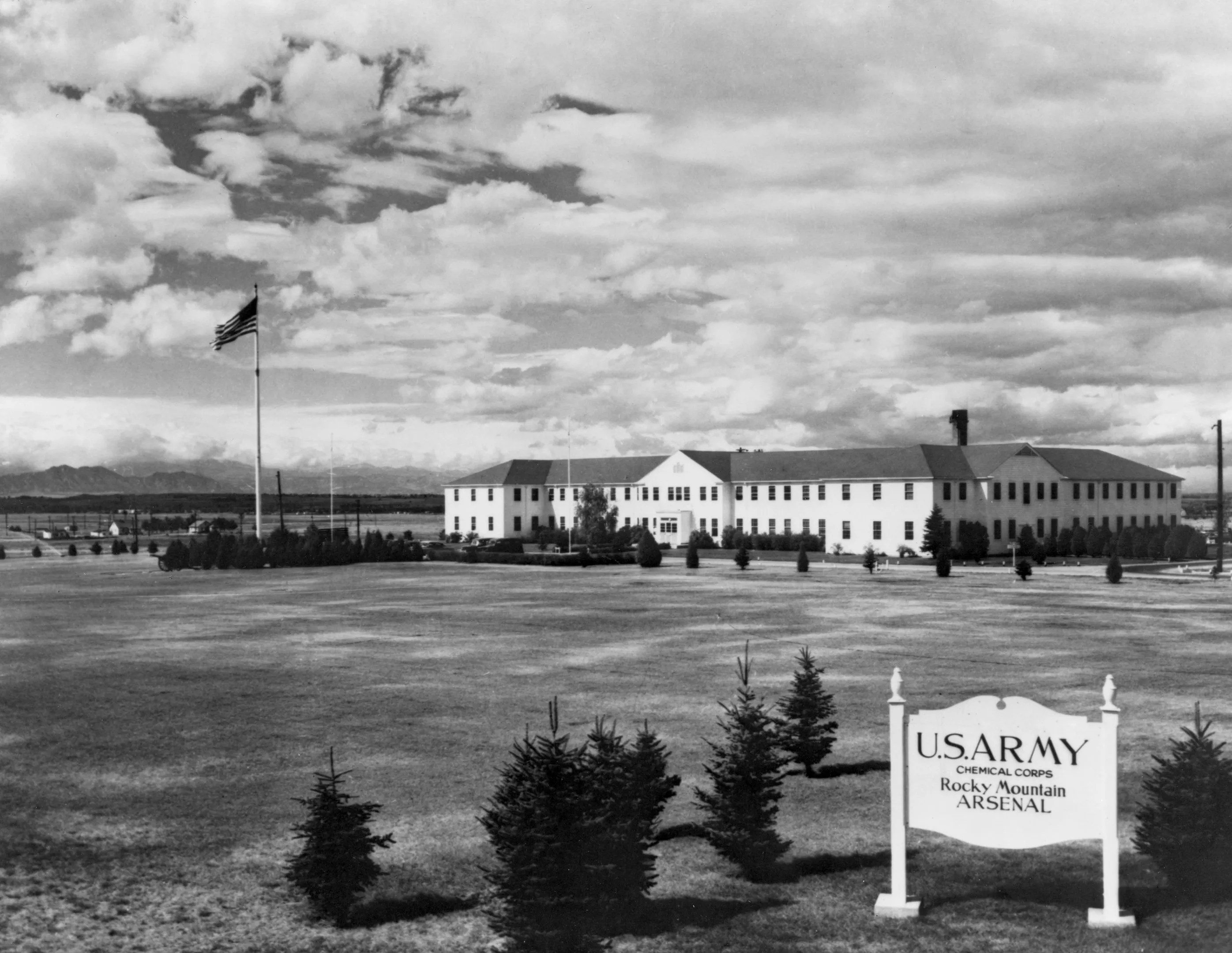
U.S, Army

Audio By Carbonatix
Southern Colorado experienced two earthquakes in the space of just five minutes today, including a 4.3-magnitude earthquake that shook Trinidad, tying an early March earthquake as the strongest Colorado quake in 2023.
All told, 132 earthquakes have occurred in the state so far this year, for a year-over-year increase of 277 percent.
That’s a lot of action for a state “considered a region of minor earthquake activity” by the U.S. Geological survey. But while Mother Nature may focus her considerable powers on other national disasters in the area, there’s still Uncle Sam to consider.
Back in the ’60s, metro Denver suffered through a series of earthquakes stemming from a 12,000-foot-deep injection well constructed at the Rocky Mountain Arsenal, a U.S. Army munitions manufacturing site and dump created during World War II on farmland just northeast of Denver.
This year, make your gift count –
Invest in local news that matters.
Our work is funded by readers like you who make voluntary gifts because they value our work and want to see it continue. Make a contribution today to help us reach our $50,000 goal!
The Army began injecting waste fluids into the well in March 1962, and a series of earthquakes erupted shortly thereafter, starting at 4:32 a.m. on April 24; by the end of December 1962, 190 earthquakes had been recorded at the Cecil H. Green Geophysical Observatory at Bergen Park. And there was a whole lot of shaking going on in the years that followed.
The strongest in the series occurred on April 10, 1965, when schools were dismissed in Boulder and legislators moved away from the chandeliers in the Colorado State Capitol; the Colorado School of Mines rated that shock at 5.0 in magnitude.
In early 1966, the Arsenal stopped dumping waste in the well, but the biggest quake yet hit at 6:35 a.m. August 9, 1967, a 5.3 shocker that caused serious damage in Northglenn. Five more quakes hit metro Denver that November, including a 5.2-magnitude event on November 26.
In September 1968, the Army began removing fluid from the injection well, and the quakes eventually ended.
In its account of the cleanup of the Rocky Mountain Arsenal, what had been rated a Superfund site, the Army website offers this history of the injection well:
Deep well injection for liquid waste has been safely used for many years at sites throughout the United States without documented damage to human health or the environment. After an extensive study of deep injection wells across the country by the U.S. Environmental Protection Agency (EPA), it was concluded that this procedure is effective and protective of the environment.
The Rocky Mountain Arsenal deep injection well was constructed in 1961, and was drilled to a depth of 12,045 feet. The well was cased and sealed to a depth of 11,975 feet, with the remaining 70 feet left as an open hole for the injection of Basin F liquids. For testing purposes, the well was injected with approximately 568,000 gallons of city water prior to injecting any waste. However, when the Basin F liquids were actually introduced, the process required more time than anticipated to complete because of the impermeability of the rock. The end result was approximately 165 million gallons of Basin F liquid waste being injected into the well during the period from 1962 through 1966.
The waste fluid chemistry is not known precisely. However, the Army estimates that the waste was a more dilute version of the Basin F liquid which is now being incinerated. Current Basin F liquid consists of very salty water that includes some metals, chlorides, wastewater and toxic organics. From 1962 – 1963, the fluids were pumped from Basin F into the well. From 1964 – 1966, waste was removed from an isolated section of Basin F and was combined with waste from a pre-treatment plant, located near Basin F, and then pumped into the well. The waste from the pre-treatment plant was generally a solution containing 13,000 parts per million sodium chloride (salt), with a pH ranging from 3.5 to 11.5. The organic content of the solution was high but is largely unknown.
The injected fluids had very little potential for reaching the surface or useable groundwater supply since the injection point had 11,900 feet of rock above it and was sealed at the opening. The Army discontinued use of the well in Feb. 1966 because of the possibility that the fluid injection was triggering earthquakes in the area. The well remained unused for nearly 20 years.
In 1985 the Army permanently sealed the disposal well in stages. First, the well casing was tested to evaluate its integrity. Any detected voids behind the casing were cemented to prevent possible contamination of other formations. Next, the injection zone at the bottom 70 feet of the well was closed by plugging with cement. Additional cement barriers were placed inside the casing across zones that could access water-bearing formations (aquifers). The final step was adding Bentonite, a heavy clay mud that later solidified, to close the rest of the hole up to the ground surface.
Today, the former chemical manufacturing and storage facility is the cleaned-up Rocky Mountain Arsenal National Wildlife Refuge, home to some of the metro area’s best hikes, scenic drives and activities ranging from wildlife watching to lectures on beavers.
Just watch where you step.
This has been updated from a piece originally published in October 2022.